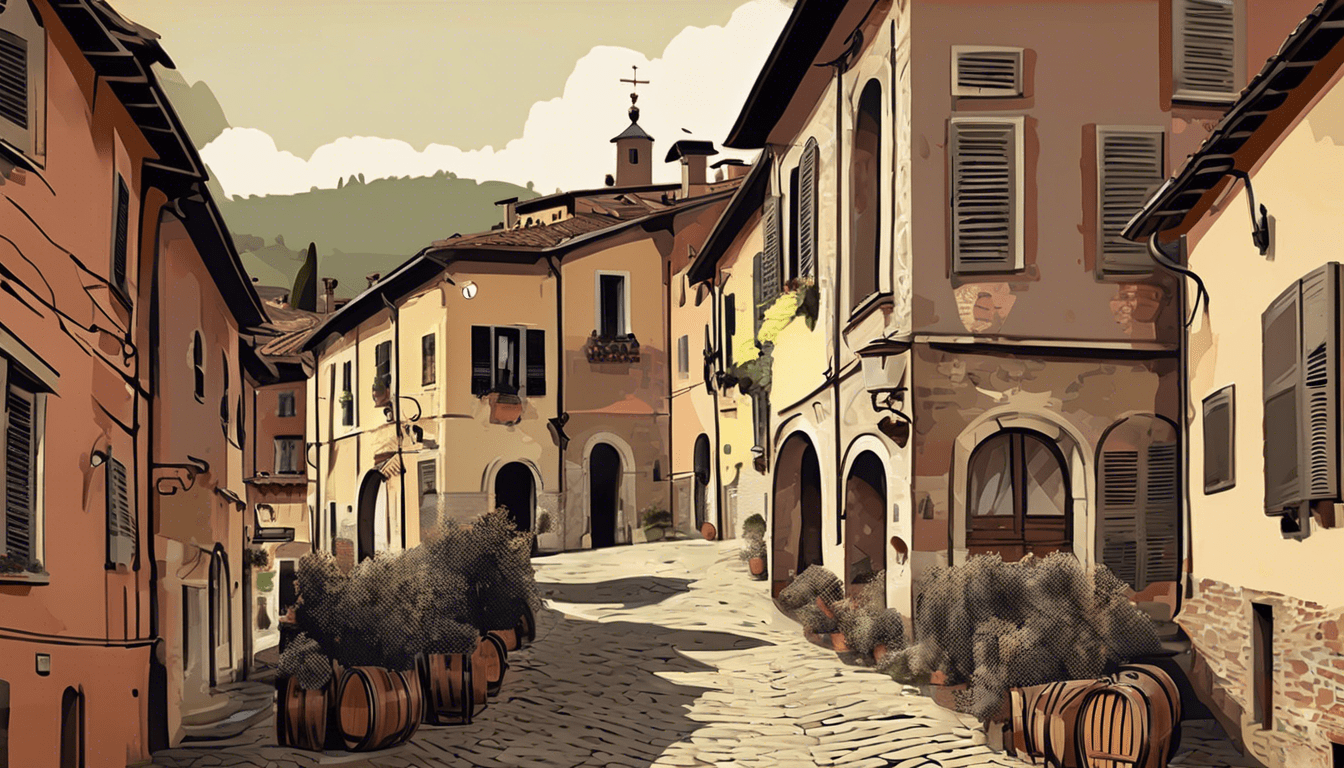Barbaresco stands as a distinguished expression of Piedmont’s terroir, crafted exclusively from Nebbiolo grapes. Known for its elegant aromas of rose petal and dark cherry, this wine balances power and finesse through careful aging. Exploring Barbaresco reveals a hidden depth often overshadowed by its famous neighbor, Barolo, inviting wine lovers to appreciate Italy’s rich viticultural heritage from a unique perspective.
Essential Guide to Barbaresco: History, Regions, and DOCG Standards
Barbaresco originated as one of Italy’s great Nebbiolo wines, with a distinct identity shaped by its history within the Piedmont wine region. Formally recognized as a DOC in 1966 and elevated to DOCG status in 1980, Barbaresco emphasizes quality and geographic precision, much like Barolo but on a significantly smaller scale. This limited scope results in more consistent style and celebrated reputation among Italian red wines.
In the same genre : How Can You Transform Your Home Kitchen into a Cozy Pub?
The DOCG framework enforces strict requirements: wines must age for at least two years (including a minimum of nine months in wood), feature a minimum alcohol of 12.5%, and be produced only from Nebbiolo grown in specified areas. Barbaresco’s style is partly due to its earlier grape ripening, which produces softer tannins and increased approachability compared to Barolo.
Three principal communes—Barbaresco, Neive, and Treiso—define the terroir. Barbaresco’s vineyards offer aromatic, structured wines; Neive’s bottlings are more powerful and tannic, while Treiso, with its higher altitude, produces Nebbiolo marked by finesse and lighter body. Microclimates, soil composition, and historic vineyard boundaries all shape Barbaresco’s enduring appeal. You can view more details on this page: https://www.cavesa.ch/en/catalogue/appellation/164-barbaresco.
Also to see : How Do British UK Bars Enhance Their Patron Experience with Unique Design Elements?
Key Characteristics of Barbaresco Wines
The Nebbiolo grape variety lies at the heart of Barbaresco, imparting a distinct mark on these renowned Italian red wines. Nebbiolo is cherished for its genetic sensitivity to both terroir of Piedmont and changing climate—this greatly influences the resulting Barbaresco wine characteristics. Sites in Barbaresco, Treiso, and Neive benefit from calcareous marl soils, with each subzone expressing the grape’s nuances in its own way.
Nebbiolo wine aroma profile is both alluring and memorable. On the nose, you’ll find classic scents such as rose petal, violet, and dark cherry, evolving to earthy, leathery layers as the wine matures. In tasting notes of Piedmont wines, flavors of licorice, truffle, and tar become pronounced with extended bottle aging, making each glass a journey through time.
Structure is a defining Barbaresco wine characteristic. Acidity and tannin levels in Nebbiolo are naturally high, providing vibrant lift and robust backbone. The aging process for Nebbiolo wines in Barbaresco softens these initially grippy tannins, thanks in part to the mandatory time in wooden barrels. Over years, Barbaresco develops an elegant, harmonious profile—approachable earlier than Barolo, yet capable of remarkable longevity.
Distinctive Features: Production, Traditions, and Comparison with Barolo
Precision in defining Barbaresco’s identity starts with the Nebbiolo grape variety—it is grown exclusively in the Piedmont wine region and underpins all Barbaresco wine characteristics. DOCG designation and regulations enforce strict boundaries: only vineyards within Barbaresco, Neive, Treiso, and San Rocco Seno d’Elvio can carry the Barbaresco wine labels and terminology. These rules also delineate 66 MEGA (Menzioni Geografiche Aggiuntive) subzones, reflecting the terroir of Piedmont and the impact of microclimate on grapes.
Traditional winemaking techniques dominate in Barbaresco. Maceration periods tend to be shorter, reflecting the unique soil types affecting Nebbiolo grapes. Wooden barrel aging is governed by law: at least 9 months in oak, with a minimum of two years total for release and four years for Riserva. These aging process for Nebbiolo wines impart softer, approachable tannins compared with Barolo wine, as supported by numerous Barbaresco wine reviews and ratings.
Comparisons with Barolo wine reveal noteworthy differences between Nebbiolo wines: Barbaresco’s smaller production, earlier grape maturation due to climatic influence on grape quality, and finer, less austere tannin structure. Notable wineries in Piedmont such as Gaja winery overview and Produttori del Barbaresco cooperative exemplify these distinctions, contributing significantly to the region’s historical significance.
Enjoying, Collecting, and Pairing Barbaresco
Barbaresco wine price ranges are diverse, stretching from accessible selections at approximately CHF 37.00 to exclusive, investment-level bottles exceeding CHF 2,350.00 in 2025. Recognized for aging gracefully, Barbaresco’s wine bottle aging potential makes it a worthy candidate for those collecting and investing in Italian wines. Exceptional vintages—particularly from years like 2016 and 2010—are highly sought after, further driving interest among collectors attentive to the nuances that different harvests reveal.
For food pairings with Nebbiolo wines, Barbaresco’s refined tannins and aromatic profile excel with regional Piedmont cuisine. Classic combinations include braised beef, wild game, and truffle-infused pasta, accentuating Nebbiolo’s essence. Local cheese such as Castelmagno and Taleggio amplify the floral and savory notes found in Barbaresco. Many sommeliers recommend roasted lamb or duck for an exquisite match with older vintages.
Proper storage conditions for Italian red wines are essential; maintain a consistent temperature near 12°C in a dark, humidity-controlled space. Serving recommendations for Nebbiolo wines include decanting for at least an hour to open up the bouquet, best enjoyed at 16–18°C. Wine tourism in Piedmont offers opportunities to visit renowned producers and experience firsthand the heritage of Barbaresco, further deepening your appreciation for these iconic Italian red wines.


